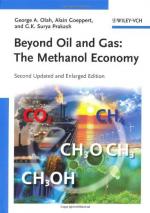|
This section contains 350 words (approx. 2 pages at 300 words per page) |
Methanol, a clear, colorless liquid, belongs to the class of substances called alcohols. All alcohols contain a hydroxyl group (-OH) attached to a carbon atom. Methanol is the simplest compound in this group, with the formula CH3OH. Besides being poisonous, methanol is also flammable, burning with a pale blue, transparent flame. Mixed with the right amount of air, methanol can explode. The volatile liquid has a mild but distinctive odor.
For centuries, methanol was called wood alcohol, because it was made by heating wood in a furnace or oven and condensing the resultant vapors. During Prohibition, many people became ill or died of methanol poisoning when they drank the liquid as a substitute for commercial liquor. The misleading name, wood alcohol, was dropped in favor of the modern name, methanol.
The compound was first isolated during the 1660s by Robert Boyle. Around 1860, Pierre Eugène Marcelin Berthelot first synthesized the compound. Today, methanol is produced by combining carbon monoxide and hydrogen.
Methanol, or methyl alcohol, is very different from ethyl alcohol (ethanol), the type found in alcoholic beverages. If one drinks even a small amount of methanol, it paralyzes the optic nerve, causing blindness. Drinking larger amounts can kill you, as methanol produces two toxic substances (formaldehyde and formic acid) when oxidized in the body. Even inhalation of methanol vapors or contact with the skin over a long time can be harmful.
Methanol is used to make formaldehyde, plastics, and other chemicals. It is also widely used as a solvent and antifreeze. Additionally, methanol is used as a fuel for portable stoves and soldering torches, as a softening agent in plastics and as a compound for extracting natural oils. Ethyl alcohol manufacturers add methanol to their non-beverage products to prevent people from drinking them. Scientists are investigating the use of methanol as an alternative fuel for cars and other vehicles. Automakers have already developed engines that run on pure methanol or a mixture of methanol and gasoline. However, when used as a fuel, methanol produces formaldehyde, a harmful pollutant. Also, methanol is more expensive than gasoline.
|
This section contains 350 words (approx. 2 pages at 300 words per page) |


